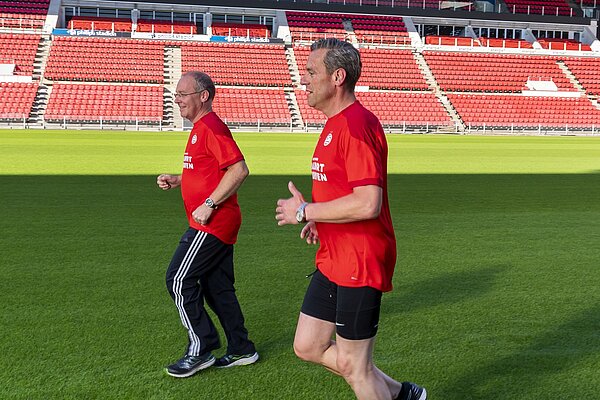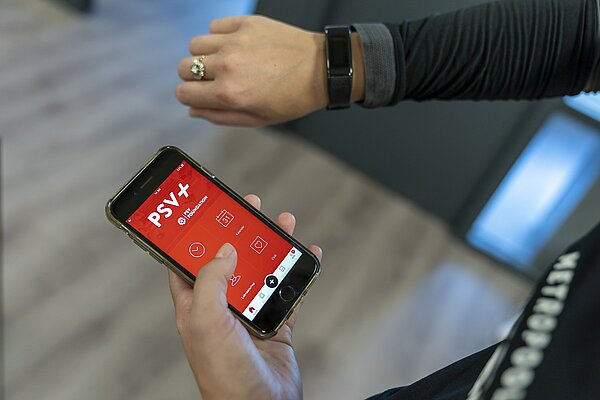
Pedometer
An important way to get a picture of your life and movement pattern is to keep track of the number of steps you take each day. Since walking is the easiest and cheapest way of moving, you can start doing it right away. There are many different pedometers, movement monitors and associated apps available.
In order to be able to properly assess the progress in your number of steps, it is advisable to take a baseline measurement first. A baseline measurement is the starting point. From there you can get to work and see your progress. In the zero measurement it is important that you do not change your movement pattern at that moment, otherwise it will become more difficult to achieve your future goals.
Number of steps per day and lifestyle levels in healthy adults
On average, an adult takes between 5,000 and 7,000 steps a day - without exercising extra - according to research. In addition, the Health Council of the Netherlands advises moderate or strenuous exercise of 150 minutes a week. The advice is therefore to exercise an extra half an hour a day. That half hour is roughly equivalent to taking 4,000 steps, depending on length, speed and so on. As a result, taking 10,000 steps a day seems to be a good starting point as advice. It is also the intention that you move so intensively during those 30 minutes that your heart rate increases and your breathing speeds up.
Aantal stappen 0 – 4.999 5.000 – 7.499 7.500 – 9.999 10.000 – 12.499 12.500 + | Leefstijl Seated lifestyle Light active lifestyle Moderately active lifestyle Active (healthy) lifestyle Very active lifestyle |
Every step counts
If you take 6,000 steps a day, the step to 10,000 steps a day doesn't seem that big. But research shows that the average Dutch employee currently takes about 4,000 steps every day. For many people, the threshold to 10,000 steps seems quite high. So don't stare blindly at that number, on the road to better health every step counts! Small progress also helps and makes a difference

How to keep track of steps?
There are many different types of tools available that can track steps. In the newer phones there is a smart motion detector. If you carry your phone with you while walking, the sensors register the form of movement and make an estimate of the number of steps and the distance travelled. But there are also various wearables on the market such as sports watches, hybrid watches and smartwatches. Choose carefully what you prefer.
Track steps with Android smartphone
Almost all Android devices that have appeared on the market since 2016 have special motion sensors. This information is available in the Google Fit app, which you can download for free from the Play Store. The Google Fit app turns your smartphone into a pedometer. However, Fit also records other forms of movement, including running and cycling. For more statistics, you can also link the app to other health apps.
Track steps with iPhone
Do you have an iPhone 5S or newer? Then your smartphone can automatically keep track of how many steps you take. The free Health app, installed by Apple on all iPhones, shows you what data your phone has collected. The start screen shows the number of steps taken, the running distance and how many steps you have climbed.
Track steps with a wearable
Although a newer smartphone is an excellent pedometer, it is not wearable. Apple and Google both indicate that the phone sensors estimate your daily movement well, but that a special activity tracker gives more accurate results. In most cases such a tracker is worn around your wrist and has more sensors. Depending on the type, a wearable can therefore also record more activities than your smartphone. For example, there are trackers that measure your heart rate, sleep behaviour, swimming and cycling sessions and show the data in special apps. If you want to know how much you consciously and unconsciously move each day, you should always have your phone in your pocket when you use an app. If you're not used to it, you'll notice that you make thousands of steps unnoticed. Then it's better to buy a wearable. Another advantage of wearables is that they are generally more resistant to dust and water than your smartphone, and that they need to be recharged less often. You have activity trackers in the form of smartwatches such as the Apple Watch 4, but there are also models with a smaller screen of, for example, Fitbit and Garmin.
Author: Nina de Rooij, PSV lifestyle coach
